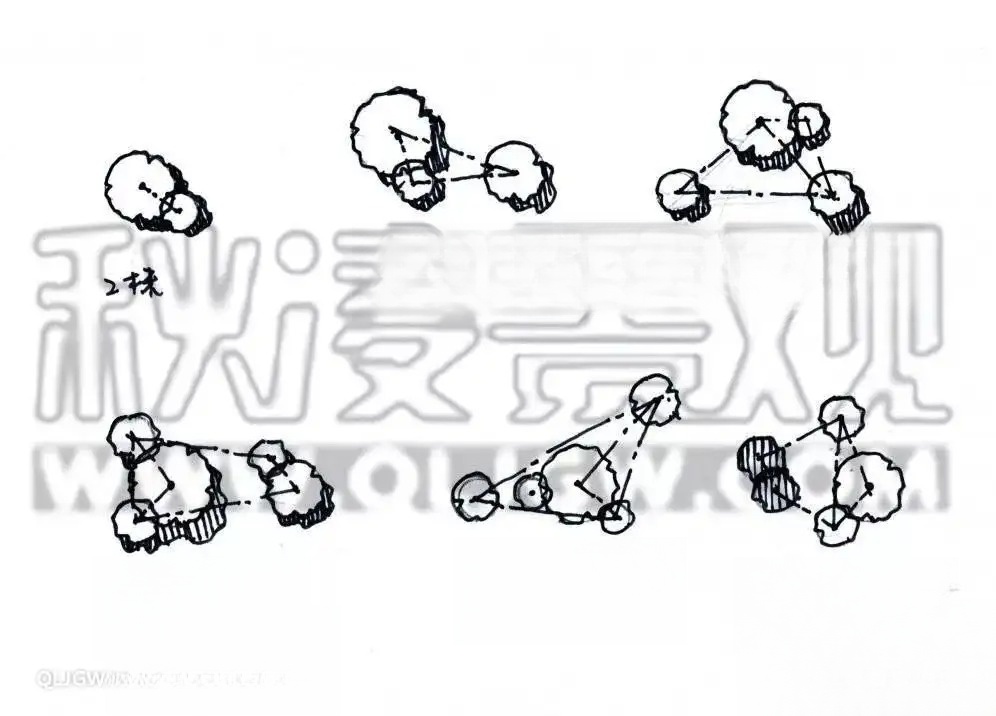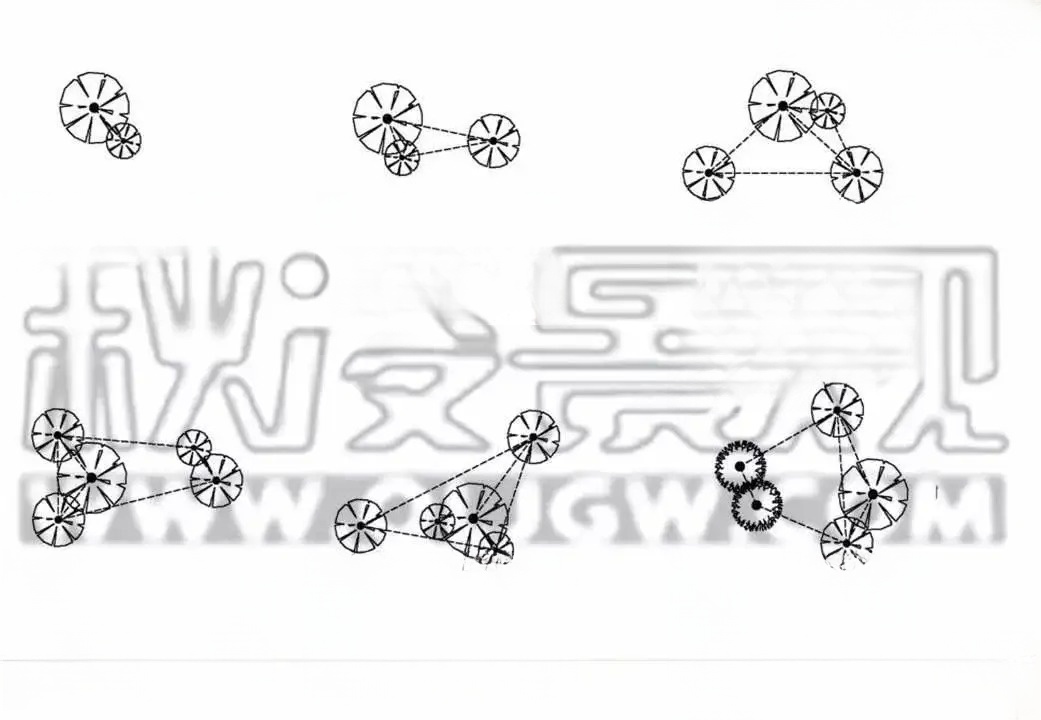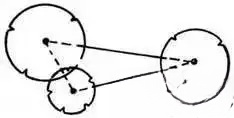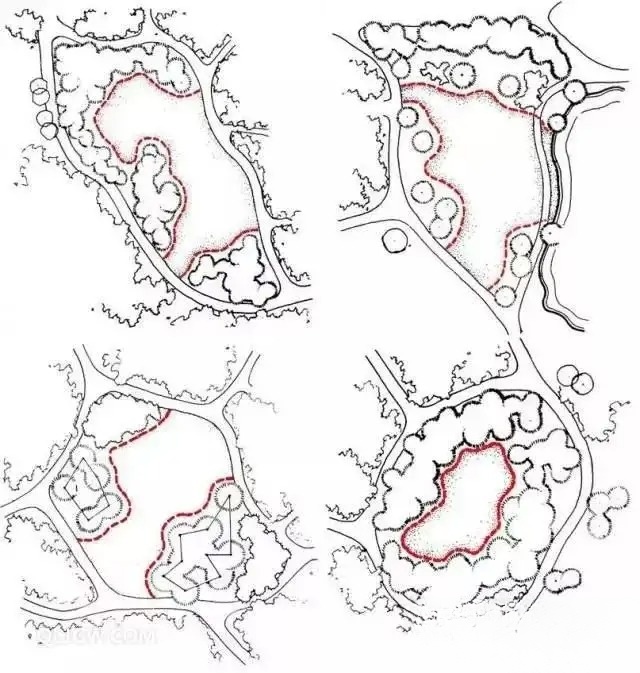The principles of matching landscape plants | Pure dry goods
The matching principles of landscape plants:
2-5 plant configuration principles In multi-cluster groups, the following should be followed:
1. Don’t have equal amounts
2. Don’t have imbalance
3. Don’t be in a straight line
4. Try not to have equilateral triangles or equilateral polygons
5. Be unified with variation (unity: 1. Grouped scenes 2. Don’t have too many types 3. Have a unified color tone with local variations 4. Have varied outlines with natural edges 5. Have variations in size and height, and use multiple layers)


2-stalk clump planting:
Matching techniques:
Seek change in unity, unify first and then change (size, height, gathering and dispersion, color, type, outline)
Unity: A. Gathering and dispersing - the distance between the trees is less than the sum of the two crown radii
B. Type and color - the tree species are the same or similar
Variations: A. Size, height - size varies
B. Contour - posture varies
Comparison of correct and incorrect cluster planting of 2 plants
Correct expression

3-strain cluster planting:
3. Focus on the size (not too equal or unbalanced - the largest and smallest should not be grouped separately) and position (not in a straight line or equilateral triangle)
Matching techniques:
Seek change in unity, unify first and then change (size, height, gathering and dispersion, color, type, outline)
Unity: A. Gathering and dispersing - the largest and smallest are closer, the medium is farther away
B. Type, color - the tree species is the same or similar
Variations: A. Size, height - large, medium, small
B. Contour - posture
The plane outline is an unequal-sided triangle, and the "2 1" grouping is arranged. The largest and smallest are in one group, and the medium-sized ones are in another group. The overall shape is asymmetrical and balanced (natural).
Avoid: In the same straight line, equilateral triangle, avoid equal or unbalanced volume. Correct and incorrect comparison of 3 plants
Correct expression

Incorrect expression

4-stalk cluster planting:
4. Focus on the size (not too equal or unbalanced - the largest and smallest should not be grouped separately, and should not be grouped in groups of 2 by 2), position (not in a straight line or equilateral triangle)
Matching techniques:
Seek change in unity, unify first and then change (size, height, gathering and dispersion, color, type, outline)
Unity: A. Gathering and dispersing - forming a sense of group scenery
B. Type and color - one or two tree species, no more than two
Variation: A. Size, height, concentration - size varies
B. Contour - posture varies
The plane outline is a scalene or scalene triangle, and is arranged in groups of "3 1". The second largest tree is a single tree in a group, and the other 3 trees are planted in the same 3-tree cluster method.
Avoid: Planting in groups of 2 or 2, with a maximum of 5 plants planted in a single group.

The thinking behind the 5 strains is the same as that of the 4 strains:
Matching techniques:
Seek change in unity, unify first and then change (size, height, gathering and dispersion, color, type, outline)
Unity: A. Gathering and dispersing - forming a sense of group scenery
B. Type and color - one or two tree species, no more than two
Variations: A. Size, height - size varies
B. Contour - posture varies
The plane outline is a scalene triangle, a scalene quadrilateral or a pentagon, and is arranged in groups of "3 2" or "4 1". Any three trees are not in the same straight line. In the "3 2" grouping, the largest tree is in the group of 3 trees, the other 2 trees are planted in the same 2-tree cluster method, and the 3 trees are planted in the same 3-tree cluster method.
Avoid: 2 2 1 grouping, largest and smallest groups separately

Plant configuration can be divided into up to five levels: tree layer, sub-tree layer, large shrub layer, small shrub layer, and perennial herbaceous vegetation.
Basic principles of arrangement: tree layer in the center, sub-tree layer on the outer edge, large shrubs and small shrubs on the outer edge; evergreen trees in the center, deciduous trees on the outer edge, and plants with gorgeous leaf and flower colors on the outer edge, so as not to cover each other.
Matching techniques: Seek change in unity, first unify and then change (size, height (five-layer matching: tree layer, sub-tree layer, large shrub layer, small shrub layer, ground cover), gathering and dispersion, color, type, outline)
Unity: A. Gathering and dispersion - follow the planting rule of 2-5 trees
B. Types - not too many tree species to avoid clutter
C. Color - overall unity with variation
Variations: A. Size, height - five-story combination
B. Outline - the forest edge in the plane space and the canopy line in the elevation space
Forest edge line: composition and enclosure of plane space
 Canopy line: front and back, height and depth of facade space
Canopy line: front and back, height and depth of facade space
